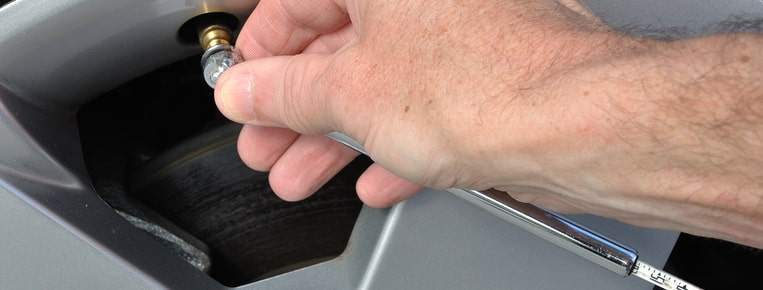Why Maintaining Proper Tire Inflation is Significant
How proper tire pressure can increase safety, efficiency, and performance.
Tires are one of the most critical components of any vehicle. They are the only point of contact between the car and the road, making them an integral part of safe driving. Proper tire inflation is crucial to ensure the vehicle operates efficiently and safely. We’ll explain why adequate tire inflation is essential and how it affects your vehicle’s performance.
In addition to safety concerns, proper tire inflation also affects fuel efficiency. Underinflated tires can cause increased rolling resistance, making the engine work harder and decreasing fuel efficiency. This results in increased fuel consumption and costs. On the other hand, overinflated tires can lead to excessive wear in the center of the tread, which reduces the tire’s life and affects fuel efficiency.
What is Tire Inflation?
Tire inflation refers to the amount of air pressure in the tire. Proper tire inflation means that the tire has been filled with the correct amount of air pressure specified by the manufacturer. Most modern cars have a tire pressure monitoring system (TPMS) that alerts the driver when the tire pressure drops below a certain level.
Why is Proper Tire Inflation is Important?
These five tips will help you understand why maintaining the correct tire pressure is essential for your vehicle’s performance. From improving fuel efficiency to extending tire life, these tips will help you maintain your tires and ensure your vehicle operates safely and efficiently.
1. Safety
Safety is the primary reason why proper tire inflation is essential. Underinflated tires can cause the tire to overheat and lead to a blowout. This can be dangerous, especially when driving at high speeds.
Overinflated tires, on the other hand, can reduce the tire’s contact area with the road, leading to reduced traction and stability. This can cause the car to skid or lose control, which can be dangerous, especially in wet or icy conditions.
2. Improved Fuel Efficiency
Proper tire inflation can improve fuel efficiency. Underinflated tires increase rolling resistance, requiring more fuel to maintain the same speed. Overinflated tires, on the other hand, reduce the contact area with the road, leading to reduced fuel efficiency. Properly inflated tires can improve fuel efficiency by up to 3%.
3. Extended Tire Life
Proper tire inflation can also extend the tire’s lifespan. Underinflated tires wear out faster due to increased heat and friction. Overinflated tires, on the other hand, wear out faster in the center of the tread due to reduced contact with the road.
Properly inflated tires distribute the vehicle’s weight evenly across the tire’s surface, reducing wear and tear.
4. Improved Handling and Performance
Proper tire inflation can improve the vehicle’s handling and performance. Underinflated tires reduce the vehicle’s handling and performance by reducing traction and stability. Overinflated tires, on the other hand, reduce the vehicle’s handling and performance by reducing the tire’s contact area with the road.
Properly inflated tires provide optimal traction, stability, and handling, improving the vehicle’s performance.
5. Reduced Carbon Emissions
Proper tire inflation can also reduce carbon emissions. Underinflated tires increase rolling resistance, which means the car requires more fuel to maintain the same speed, increasing carbon emissions. Overinflated tires, on the other hand, reduce fuel efficiency, leading to increased carbon emissions.
Properly inflated tires can reduce carbon emissions by up to 1.5%.
How to Check Tire Inflation
Checking tire inflation is a simple process that can be done at home or a service station. Here’s how to do it:
1. Check the Manufacturer’s Recommended Tire Pressure
The manufacturer’s recommended tire pressure can be found in the owner’s manual, the door jamb, or the glove compartment. Make sure to check the recommended tire pressure for your vehicle.
2. Check the Tire Pressure
Using a tire pressure gauge, check each tire’s pressure, including the spare tire. Do this when the tires are cold, as the heat generated by driving can increase tire pressure.
3. Adjust the Tire Pressure
If the tire pressure is below the recommended level, add air to the tire until it reaches the recommended level. If the tire pressure is above the recommended level, release some air until it reaches the recommended level.
4. Repeat the Process
Repeat the process for all four tires, and ensure that each tire has the same level of inflation. Uneven tire inflation can lead to handling and performance issues.
5. Check Tire Inflation Regularly
Make it a habit to check the tire inflation at least once a month or before embarking on a long road trip. Tire pressure can fluctuate due to changes in temperature or driving conditions, so regular checks can ensure that the tires are always correctly inflated.
Proper Tire Inflation is Important
Proper tire inflation is crucial for safe and efficient driving. Underinflated or overinflated tires can reduce traction, stability, and handling, which can be dangerous, especially in wet or icy conditions.
Proper tire inflation can also improve fuel efficiency, extend tire life, and reduce carbon emissions. Checking tire inflation regularly is a simple process that can be done at home or a service station and can ensure that your vehicle operates efficiently and safely.
Remember, proper tire inflation is crucial not just for your vehicle’s performance but also for your safety and passengers. So, take the time to check your tire pressure regularly, and drive safely!
















